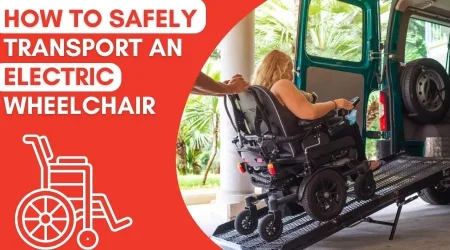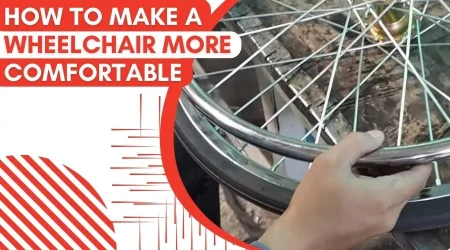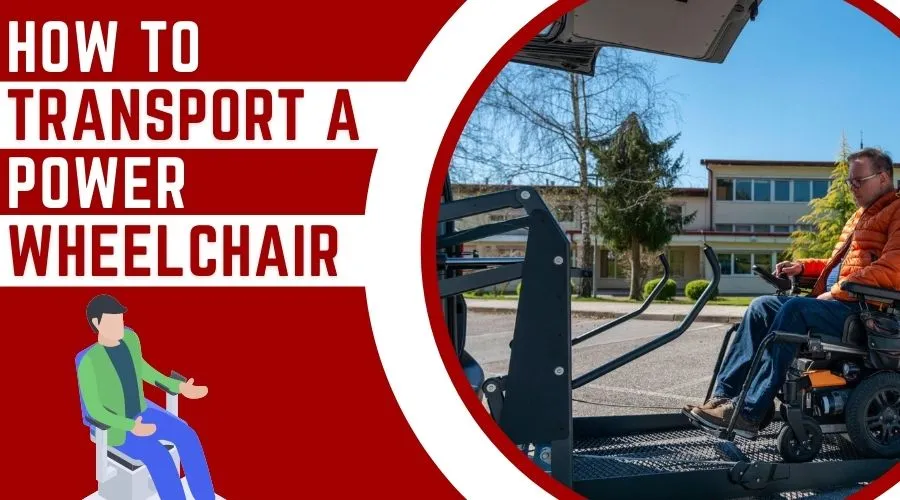
Power wheelchairs provide a great way for those with mobility challenges to access the world around them. However, transporting a power wheelchair can present some challenges.
A simple solution is that electric wheelchairs can be transported on the back of any vehicle equipped with a bumper-mounted rack. These racks, similar to bicycle racks, can be attached to the bumper of any motor vehicle, and the electric wheelchair is either hooked on the rack or secured with a bar tightened with wing nuts.
From loading and unloading the wheelchair to safely securing it while in transit, there are a few important steps to ensure the safe and secure transport of a power wheelchair.
I will provide an overview of the best practices for transporting a power wheelchair so that those with mobility challenges can get to their destination with peace of mind.
How To Transport A Power Wheelchair To Ensure A Safe Journey
From the basics of preparing the wheelchair for transport to the best ways to secure the chair, this guide is designed to help ensure a safe journey.
Preparing the Power Wheelchair for Transport
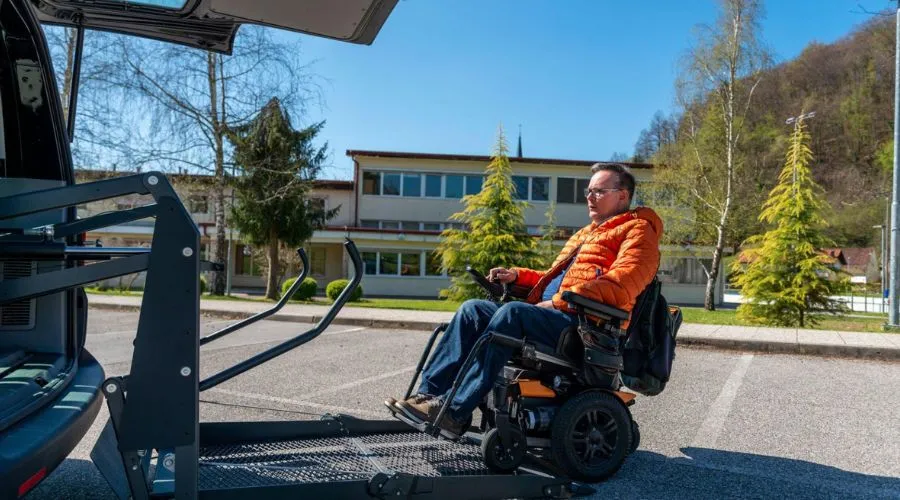
Before loading a power wheelchair into a vehicle, it’s important to prepare the chair for transport. This will help ensure the safety of the user and the people around them during the trip.
While no two wheelchairs are exactly alike, there are a few basic steps every user should take before loading a power wheelchair.
First, it’s important to inspect the chair for any damage. Look for loose wheels, frayed wiring, and broken parts. If you notice any damage, it’s best to fix or replace it before the chair is transported.
Next, check the condition of the tires. Make sure the tires have enough air in them and that they don’t have any nails or other pieces of debris lodged in them. If any of the tires are under-inflated or have any other issues, it’s best to fix them before transport.
Finally, make sure the chair is charged and ready to go. This will help to ensure that the user arrives at their destination without issue.
Securing the Power Wheelchair in the Vehicle
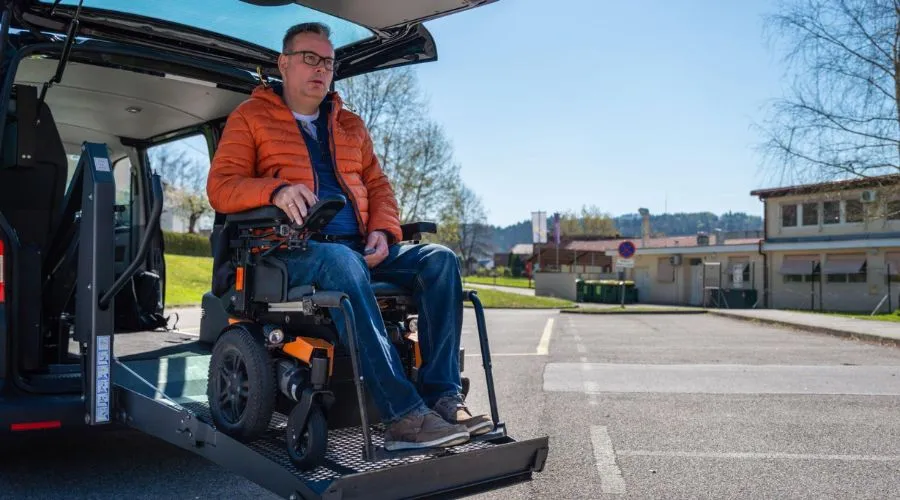
Once you’ve loaded the power wheelchair into the vehicle, it’s important to ensure it’s properly secured. All vehicles are different, so there is no one-size-fits-all method for securing a power wheelchair in a car.
However, there are a few general rules that will help ensure the wheelchair remains secured during transit. First, it’s important to place the chair in the backseat of the car. The backseat is the safest place to transport a power wheelchair.
This will help avoid the possibility of injury to the user or those seated in the front of the car. While the back of the car is usually the safest place to transport a power wheelchair, there are a few things to keep in mind. It’s important to avoid any sharp or protruding objects in the back of the car.
This will help to protect both the power wheelchair and the vehicle. It’s also best to avoid areas that might collect water, such as uncovered floor vents. This will help to prevent damage to the power wheelchair and the car.
Loading and Unloading the Power Wheelchair
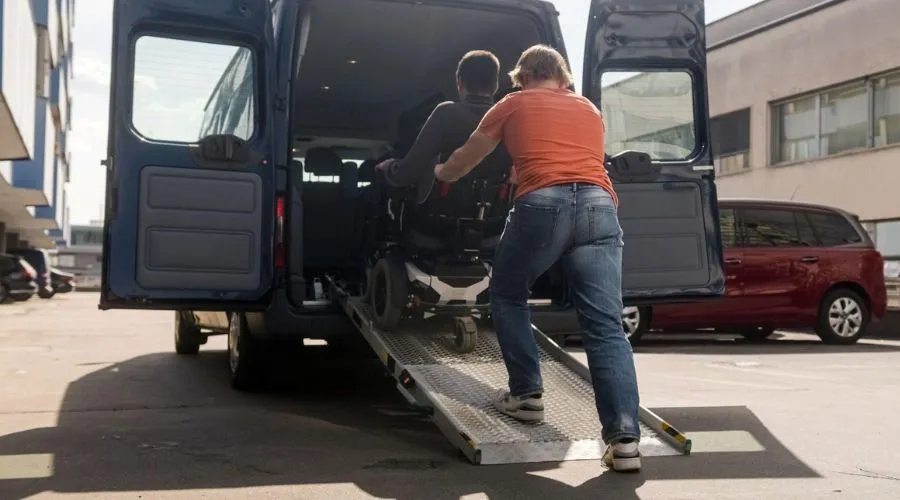
Once you’ve loaded and secured the power wheelchair, it’s time to load and unload the chair. Loading and unloading a power wheelchair can present some challenges, but with the right techniques, it can be done safely and efficiently.
When loading a power wheelchair, it’s important to approach it from the back of the car. This will help to reduce the risk of injury to the user.
Lift the rear of the chair and gently guide it into the car. Once the chair is in the backseat, it’s helpful to have someone assist you with securing it.
When unloading a power wheelchair, approach the chair from the front of the car. Gently lower the chair until it is resting on the ground. Ensure that the chair is stable on the ground before attempting to assist the user out of the backseat.
Safety Tips for Power Wheelchair Transport
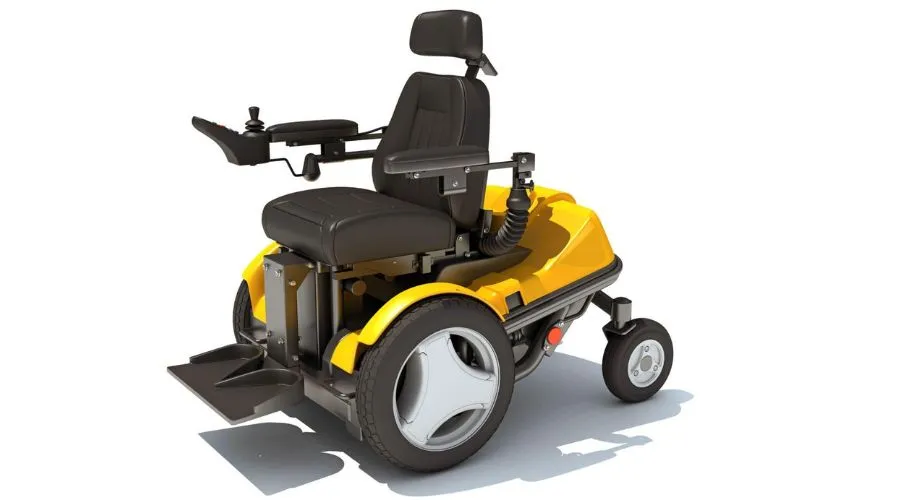
When transporting a power wheelchair, there are a few general safety tips to keep in mind.
First, it’s important to secure any loose items in the backseat. This will help to prevent the items from flying around the back of the car during transit.
It’s also important to put the armrests up on the power wheelchair. This will help to prevent the armrests from getting caught in the door as you load and unload the power wheelchair.
When transporting a power wheelchair, it’s important to keep the chair in the backseat of the car. However, there are a few things to keep in mind.
When transporting a power wheelchair in the backseat of a car, it’s important to secure the chair. This will help to protect both the power wheelchair and the people in the car.
It’s also important to keep an eye on the rear windshield. If the wheelchair is blocking the driver’s view, it’s best to move it somewhere else.
Transporting Power Wheelchairs on Public Transportation

When transporting power wheelchairs on public transportation, it’s important to understand the different policies and procedures of each mode.
While there are no standardized policies in place, there are a few steps you can take to ensure a safe and efficient journey. Before loading a power wheelchair on a bus, it’s important to approach the driver.
Let the driver know that you plan to bring a power wheelchair on the bus. This will help to ensure a smooth and safe journey for everyone.
If you’re taking a train, it’s important to check the train’s policy for power wheelchairs in advance. All trains are different, so it’s best to know what to expect before you board.
Transporting Power Wheelchairs on Airplanes
Power wheelchairs are considered large pieces of medical equipment. As such, there are a few specific rules you need to follow when flying with a power wheelchair.
Before flying with a power wheelchair, it’s important to check the airline’s policy for large pieces of medical equipment. Each airline is different, so it’s best to check the specific regulations of the airline you’ll be flying with.
Once you’ve confirmed that your power wheelchair is allowed on the plane, there are a few steps you need to take to prepare it for transport. When preparing a power wheelchair for air travel, it’s important to review the FAA regulations.
This will ensure that the wheelchair meets all of the requirements for air travel. In addition to meeting the FAA requirements, it’s important to prepare the power wheelchair for travel. This will help to make the experience as smooth as possible for all involved.
Best Practices for Storing a Power Wheelchair
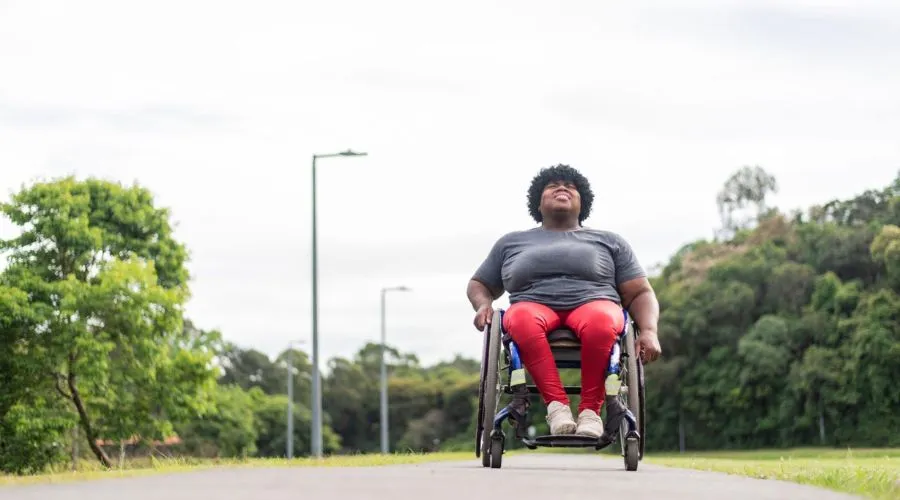
When storing a power wheelchair, it’s important to keep a few things in mind. First, you should always store the wheelchair in a clean, dry space. This will help to extend the life of the wheelchair and keep it in good condition.
It’s also important to avoid storing a power wheelchair in direct sunlight. This can heat up the power wheelchair and cause damage over time.
Finally, it’s important to make sure the power wheelchair is properly balanced and secured when storing it. This will help to prevent damage to the chair and make it easier to access when you need it.
Troubleshooting Common Issues with Power Wheelchair Transporting
While transporting a power wheelchair is generally a safe and smooth process, there are a few issues that can arise. If you experience some issues while transporting a power wheelchair, don’t worry.
There are a few ways to troubleshoot these issues and get back on track. If you notice a scuff mark on the car’s rear windshield, it’s likely that the power wheelchair is touching the car.
As long as the mark isn’t too deep, it should disappear once you unload the wheelchair. If you notice a mark that won’t go away, it’s best to take your vehicle to a mechanic to have it evaluated.
If the wheelchair is rocking back and forth in the car, it may be unbalanced. To remedy this issue, it’s best to make sure the wheelchair is properly balanced. If that doesn’t solve the issue, it may be possible that a tire is under-inflated.
Conclusion
The best way to get around is by using public transportation. It’s cheaper, more environmentally friendly, and it’s a great way to meet new people.
However, when you have a disability, taking public transportation can be difficult. Almost all public transportation vehicles have stairs,
Frequently Asked Questions
How do you carry a wheelchair in the back of a car?
Carrying a wheelchair in the back of a car can be a bit tricky, but with the right preparation and knowledge, you can do it safely and securely.
The first step is to make sure that your car is properly equipped for the task. Your vehicle should have adequate headroom and tie-down points in the trunk or cargo area for secure attachment of the wheelchair. If your car doesn’t have these features, you may need to install them before you can safely carry a wheelchair.
Once you’ve made sure your car is ready for the job, you’ll need to secure the wheelchair in place. Start by positioning the wheelchair as close to the rear of the car as possible and then make sure it’s properly secured with tie-down straps or ratchet straps. Make sure to double-check the straps to make sure they’re tight and secure.
You should also make sure to check that the wheelchair is stable and secure before you start driving. You can do this by gently pushing or pulling on the wheelchair to see if it moves or shifts in any direction. If it does, you’ll need to readjust the straps or add more straps to keep it stable and secure while you drive.
Finally, don’t forget to double-check your work when you arrive at your destination. Make sure that all of the straps are still tight and secure and that the wheelchair hasn’t moved or shifted during your trip. Doing this will help ensure that your wheelchair remains safe and secure during your travels.
Carrying a wheelchair in the back of a car isn’t always easy but with a little preparation, you can do it safely and securely. And remember, always double-check your work before and after each trip to ensure that your wheelchair remains safe and secure during your travels.

